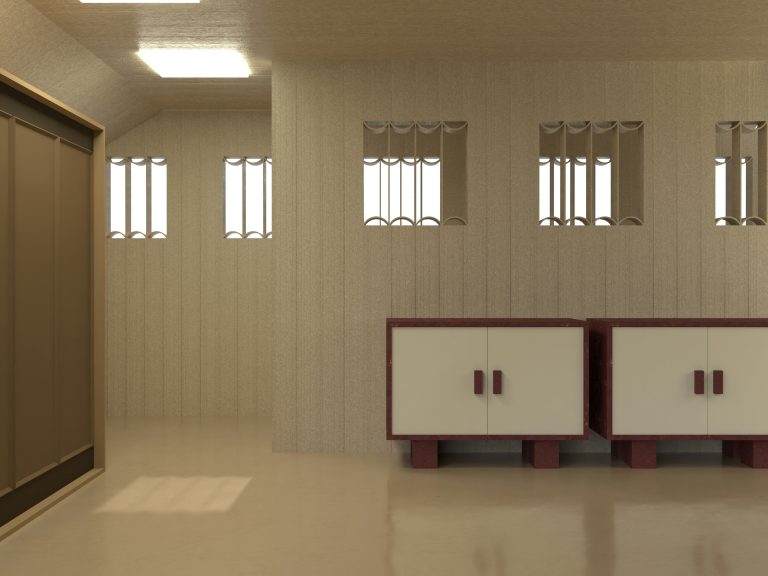Expert explains how to use tiles to make rooms seem bigger
Key Findings:
- Expert reveals large and tiny tiles can both create illusions of space in small homes
- Strategic use of tile finishes and patterns can make rooms appear brighter and more open
- Tile colour and innovative laying patterns significantly impact perceived room dimensions
How do you make the most of a small space? With tiny homes becoming ever more popular and surging rent costs forcing people to accept smaller living spaces, making a lot out of a little is essential in today’s housing market.
“The market for tiny homes in the USA is projected to increase by over $4.82 billion between 2023 and 2027,” says Henry Maia from Mineral Tiles. “Whether you’re interested in buying a tiny home or just looking to make the most of the space you can afford, these tiling tips will help make your home feel much more spacious.”
Use Large Or Tiny Tiles To Create The Illusion Of More Space
How It Works
Large tiles with minimal grout lines make the floor or wall appear less cluttered, tricking the eye into perceiving a larger space. Tiny tiles can also be effective in small bathrooms or feature areas where their intricate patterns can distract viewers from the size of the space. “They’ll be so dazzled by the intricate patterns that they’ll forget the size of the room,” Henry explains.
How To Implement
- Choose large-format tiles (24 inches or larger) for the main areas of a room to minimise grout lines and extend the perceived floor space.
- Use smaller tiles in specific areas, such as backsplashes or bathroom walls, to add visual interest without overwhelming the space.
- Ensure the grout colour closely matches the tile to enhance the seamless, expansive effect.
Capitalise On The Light-Reflecting Properties Of Tiles
How It Works
Tiles with a gloss, semi-gloss, or metallic finish reflect light, making a room feel brighter and more open. This reflection can amplify natural and artificial lighting, creating a more spacious appearance.
How To Implement
- Install glossed tiles in areas that receive a good amount of light to maximise the reflection.
- When selecting the finish, consider the room’s usage—gloss tiles are slippery when wet, so exercise caution when using them in bathrooms.
- Plan the placement of your tiles and light fittings at the same time so they work together, enhancing the room’s brightness and spacious feel.
Create Zones With Tile Patterns
How It Works
“Using different tile patterns in specific areas of a room can create visual zones, which gives the illusion of a larger space,” Henry says. “This technique draws the eye to different focal points, giving the impression that there’s a lot in the room, therefore making it feel spacious.”
How To Implement
- Use contrasting tile patterns to define different functional areas, such as a dining area in a kitchen.
- Consider transitional patterns that blend smoothly to avoid abrupt visual breaks.
- Arrange rugs or furniture to complement the zoning effect created by the tiles.
Use Innovative Tile Laying Patterns
How It Works
Innovative tile-laying patterns like herringbone or chevron guide the eye in specific directions, creating visual flow and making spaces appear longer or wider. The orientation of tiles can also play a critical role; for example, placing tiles diagonally can make the room feel more expansive.
How To Implement
- Diagonal or chevron patterns are ideal for narrow rooms, as they draw the eye outward, making the space seem broader.
- Use large, rectangular tiles laid vertically to enhance the perception of height in rooms with low ceilings.
- For a unified look that expands the space, continue the same tile pattern from one room to the next, especially in open floor plans.
How Tile Color Affects Your Perception Of Space
Light-coloured tiles reflect more light than darker shades, making a room feel more open and airy. “Using tiles that closely match the wall colour can blur the boundaries between the walls and floor, enhancing the room’s perceived dimensions,” Henry explains.
How To Implement
- Opt for neutral shades like white, cream, beige, or light grey to maximise light reflection.
- Consider the size and function of the room when selecting tile colour; for instance, use darker tiles sparingly and strategically to create depth without making the space feel confined.
“You can also use feature walls to transform the perception of space within a room,” says Henry. “By creating a focal point with distinctively patterned or textured tiles, you can draw the eye and add depth, dramatically altering how a viewer perceives the room’s dimensions.”


